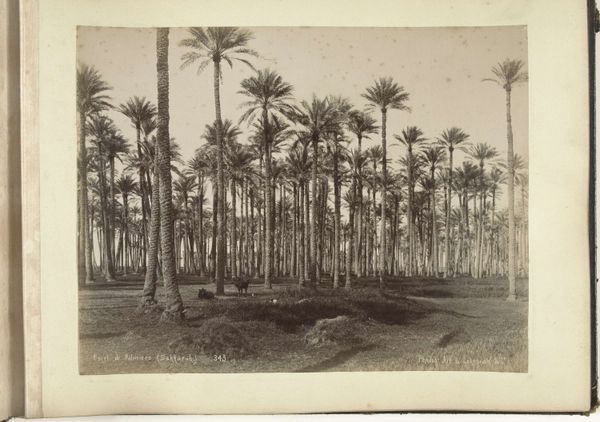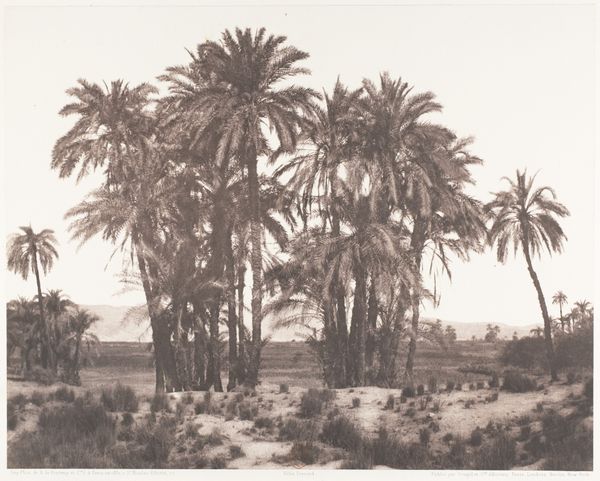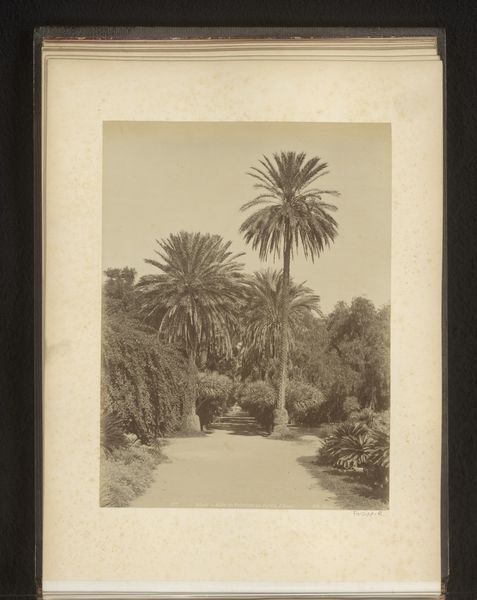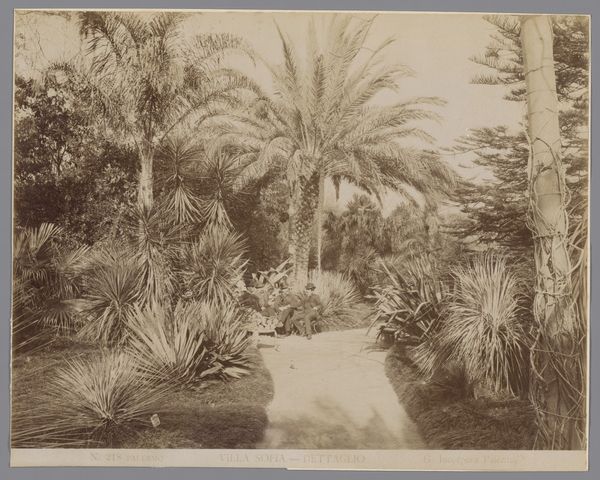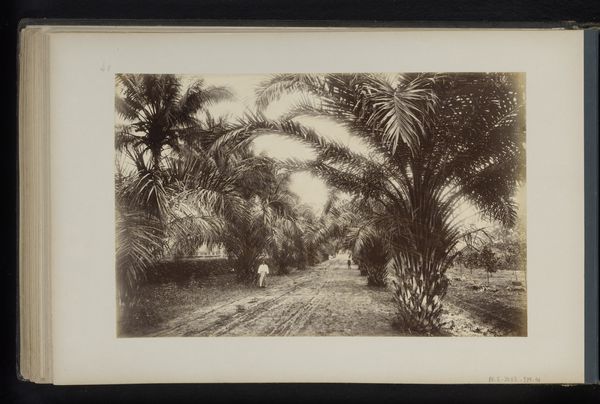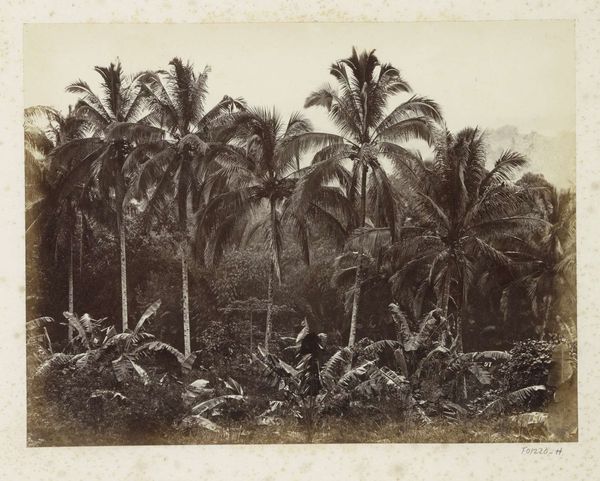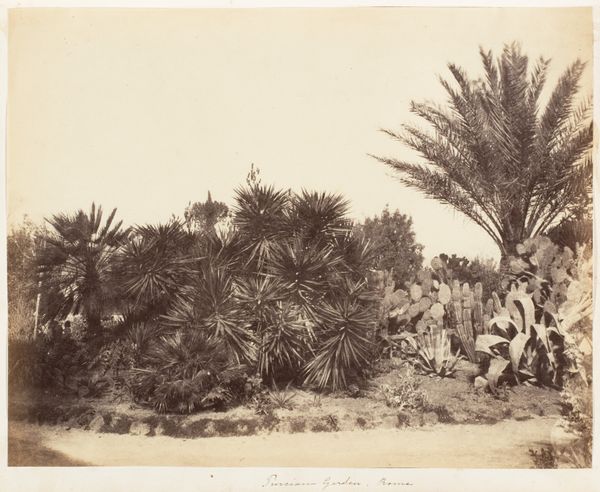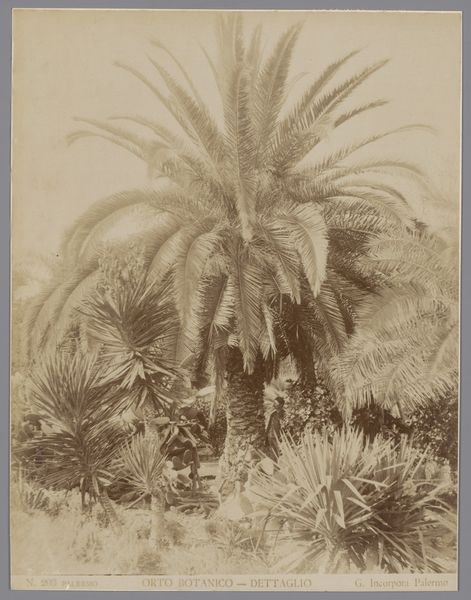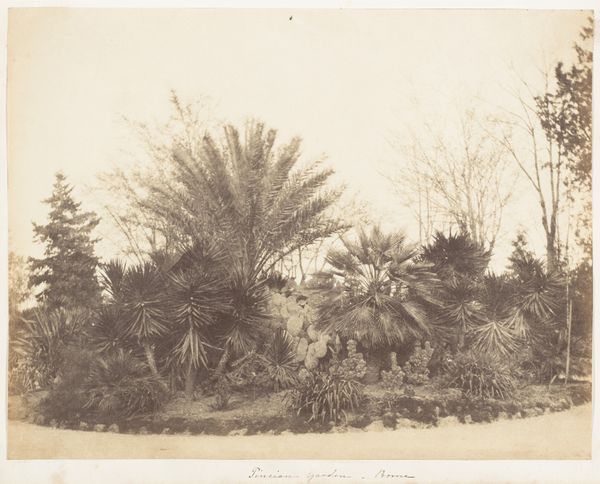
Palmbomen bij Bordighera en gezicht op de baai van Ospedaletti, Italië 1881 - 1900
0:00
0:00
photography, gelatin-silver-print
#
landscape
#
photography
#
orientalism
#
gelatin-silver-print
Dimensions: height 316 mm, width 422 mm
Copyright: Rijks Museum: Open Domain
Editor: Here we have "Palmbomen bij Bordighera en gezicht op de baai van Ospedaletti, Italië," a gelatin silver print, sometime between 1881 and 1900, by Carlo Brogi. The array of palms in varying sizes, layered in front of the water, creates an almost theatrical backdrop. What strikes you most about its composition? Curator: The interplay of light and shadow. The photographer captures the skeletal structures of the palm fronds with stark clarity. Look at how Brogi orchestrates the placement of the palm trees. Notice the tonal gradations, from the sun-drenched fronds to the deep shadows that anchor the foreground. How might one interpret this structured composition? Editor: Perhaps as an intention to bring order to a naturally exotic landscape? The repetitive vertical lines of the palms offer a sense of visual rhythm, in what could otherwise feel unstructured. Curator: Precisely! The technical proficiency here is also noteworthy, as gelatin-silver printing was complex. How do you perceive its role in defining this formal structure and the photographic impression? Editor: The monochromatic palette forces us to concentrate on the tonal range and textural nuances. There is no burst of color to distract from form. Curator: Agreed. And this restraint, ironically, intensifies the almost dreamlike quality of the orientalist image. The image reveals both an objective capture and an arrangement to portray the landscape in particular ways. Editor: I never thought of landscape photography having so much structural depth! It's much more than just pointing and shooting, then. Curator: Absolutely. The form can tell as much, if not more, than what it actually depicts.
Comments
No comments
Be the first to comment and join the conversation on the ultimate creative platform.
